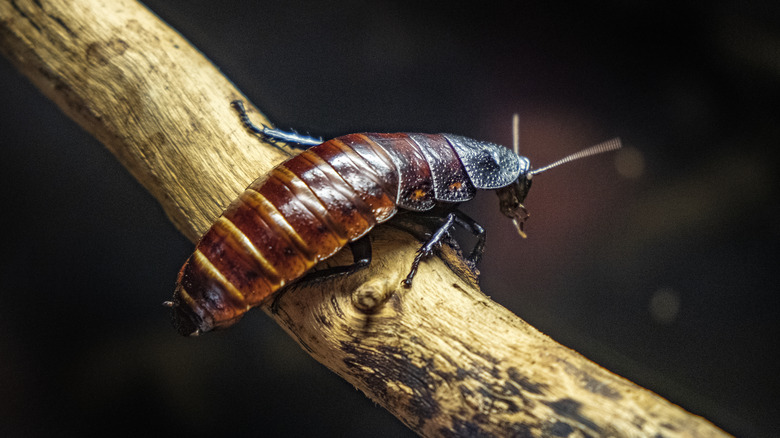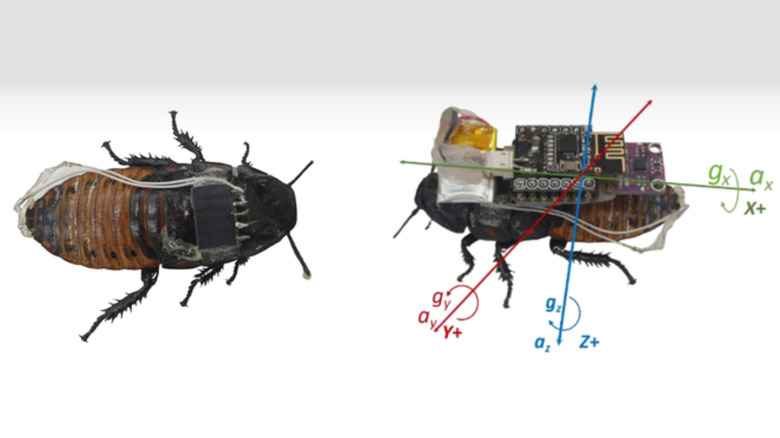Why Scientists Just Turned These Cockroaches Into Cyborgs
Great news! Scientists have optimized the movement patterns of cyborg cockroaches using machine learning. That's a real thing that actual human beings achieved this year — what a time to be alive, right? Understandably that can be a lot to take in, so let's back it up. First off, cyborg cockroaches are a thing and have been for years. We're not talking about robots inspired by cockroaches — that would be a form of biomimicry, or modeling technology after nature. No, these are real, living insects with surgically implanted hardware including accelerometers, gyroscopes, transmitters, and batteries.
That's a lot of gear for such a small creature, so Madagascar hissing cockroaches were selected for their exceptional size, ranging from 5 to 7 cm. Despite the advanced state of robotics and AI, building tiny automated robots capable of navigating irregular environments and righting themselves when they tip over is still super hard to do. And while some might be tempted to go the biomimicry route and develop tiny robots using natural designs, others have decided it's a heck of a lot easier to just plug a couple of wires into the real thing.
But it all leads to the same question: why? Well, according to a new study in the journal "Cyborg and Bionic Systems," cyborg cockroaches are an ideal solution for search and rescue operations. For example, finding disaster survivors buried in rubble is difficult, and time is critical. Cockroaches can explore places where humans can't. But getting them to stay on task is a whole other challenge.
How do you steer this thing?
In the paper, the scientists provide close to 15 years' worth of examples of what they call "insects as hybrid robot platforms," including one 2009 study describing the wireless control of a beetle while in flight. But, it turns out, getting an insect to go where you want it to — even with implanted electrodes — isn't like operating even the most bizarre of video game controllers.
Building on previous studies, scientists found that cockroaches naturally tend to move in some predictable ways. They move around a lot when it's warm, but pretty much stop when it drops below 70°F. When there's bright light they seek out dark places, and once they're in the dark they stay put. They prefer to follow along the edges of walls and objects, and when they're in the open, they more or less move at random.
Using a camera, motion sensors, and machine learning, the researchers developed a program that could use only the motion data from a cyborg cockroach to determine whether or not it was moving. If it determined the cockroach was at rest, it would apply "automatic stimulation" that got the cockroach moving again. Apparently, the program worked remarkably well, with the scientists reporting, "This system increased the search rate and traveled distance by 68% and 70%, respectively, while the stop time was reduced by 78%." There's no statement available describing the cockroaches' opinion on the matter, but hopefully they approve because human cyborgs are arguably already here.

